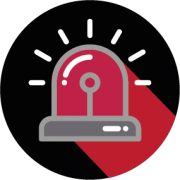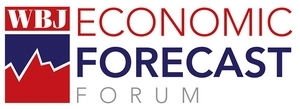(UPDATED 4/21/20)

4/21/20 Update – Senate Approves More PPP and EIDL Funding; Prepare Now.
Late this afternoon, the US Senate passed a $480 in COVID-19 relief funding. Of this, $310 Billion is for PPP loans and an additional $60 Billion for the EIDL program. If want to apply for a PPP loan, the time to act is now. While it will take time for the House of Representatives to vote, the President to sign, and the SBA to restart the process, you need to be ready. Here is an action plan:
- Contact a banker who will take your application and help you apply.
- If you have an SBA lender, this is the best place to start.
- If you do not have a SBA lender, contact your business banker. If you bank is not participating in the program, ask them for a personal referral and introduction to a SBA lender in their network of contacts. The personal introduction is key, as banks will want to serve existing customers first.
- If you do not have a banking relationship, contact the manager of the branch you use. Do not be embarrassed to introduce yourself and the number of years you have used their bank. Relationships matter, even you are creating a new one.
- About $60 Billion of the PPP program is earmarked for small banks, rural banks, and credit unions. The intent is to ensure more money makes it to small businesses that bank locally. Local relationships and introductions can help you connect with a lender that will do more than take your application and put it in a pile.
- Fintech companies, including PayPal, Intuit and others, as well as American Express are participating in the program. If you have a business relationship, these may be another resource.
- Ask your banker for a checklist of information you need to prepare. The rules are not expected to change, so they should have this on hand.
- Ask your banker when they will start accepting applications. Ask them to notify you once their portal is open or when they are accepting packets by email. Many banks will take your packets and queue them up for entry as soon as the SBA program opens.
- Gather and review the information now; have your packet ready. Reach out to your payroll firm; many have created special reports with the information you need to include with your application.
With proper preparation, your application can closer to the front of the line.
4/16/20 Update – Applications for PPP and EIDL Programs Have Been Halted
- Funding for the Payroll Protection Program and the Economic Injury Disaster Loan program has been fully committed. Per the SBA website:
SBA is unable to accept new applications at this time for the Economic Injury Disaster Loan (EIDL)-COVID-19 related assistance program (including EIDL Advances) based on available appropriations funding. Applicants who have already submitted their applications will continue to be processed on a first-come, first-served basis.
4/10/20 Updates – Important Changes to SBA Programs
- Caveats on SBA ‘grants’ program: Inc. Magazine is reporting that the SBA clarified the SBA EIDL grant program, indicating the amount would be $1,000 per employee, up to $10,000, rather than a fixed $10,000 grant. Note that the article’s link to the SBA Bulletin is no longer available online. ALSO, the SBA site now states that businesses will receive funds “in a few days”, a change from the prior 3 business day expectation.
- Change in payments for EIDL loans: The New York Times is reporting that the SBA is limiting initial funding of EIDL program loans to $15,000 — far below the program expectations of loans up to $2 million. The $15,000 would be in addition to the “up to $10,000” advance/grant. There is no information whether the loans are capped at $15,000 or if they are controlling disbursements for the few months. This restriction could be due to limited funding. As reported by CNBC, “… nearly 4 million businesses had applied for EIDL funding for a total of $383 billion, adding that Congress has allocated $17 billion for the program.”
4/06/20 Updates – Paycheck Protection Program and Debt Relief
From the SBA information site.
- On Friday 4/2, the SBA changed and updated the Paycheck Program Protection loan application and required documentation. In addition to annual payroll reports and copies of your 940 for 2019, you need to provide quarterly 941’s and payroll reports. Check with your lender, as you may need to resubmit your application package.
- On Friday 4/2, the SBA Debt Relief website was changed to state that the SBA will automatically make six (6) months of payments on existing SBA 7a and 504 program loans. We recommend contacting your SBA lender to confirm.
- If you apply for the EIDL, you are eligible for a $10,000 forgivable advance (even if you do not close on the EIDL). You may also qualify for a $25,000 bridge loan. Applying for the EIDL now, however, may impede your ability to secure a Paycheck Protection Program forgivable loan. We recommend speaking with your lender BEFORE submitting your EIDL application.
4/01/20 Updates – Paycheck Protection Program
From the SBA information site.
- You can apply through any existing SBA 7(a) lender or through any federally insured depository institution, federally insured credit union, and Farm Credit System institution that is participating. Other regulated lenders will be available to make these loans once they are approved and enrolled in the program. You should consult with your local lender as to whether it is participating in the program.
- Lenders may begin processing loan applications as soon as April 3, 2020.
- If you wish to begin preparing your application, you can download a sample form to see the information that will be requested from you.
The Coronavirus Aid Relief and Economic Security (CARES) Act allocated $350 billion to help small businesses keep workers employed amid the pandemic and economic downturn. Known as the Paycheck Protection Program, the initiative provides 100% federally guaranteed loans to small businesses who maintain their payroll during this emergency. These loans may be forgiven if borrowers maintain their payrolls during the crisis or restore their payrolls afterward.
Am You Eligible?
You are eligible if you are:
- A small business with fewer than 500 employees
- A small business that otherwise meets the SSA’s size standard
- A 501(c)(3) with fewer than 500 employees
- An Individual who operates as a sole proprietor
- An Individual who operates as an Independent contractor
- An Individual who is self-employed who regularly carries on any trade or business
- A Tribal business concern that meets the SBA size standard
- A 501(c)(19) Veterans Organizati0n that meets the SBA size standard
In addition, some special rules may make you eligible:
- If you are in the accommodation and food services sector (NAICS 72), the 500-employee rule is applied on a per physical location basis
- If you are operating as a franchise or receive financial assistance from an approved Small Business Investment Company the normal affiliation rules do not apply
What Will Lenders Want to See?
In evaluating eligibility, lenders are directed to consider whether the borrower was in operation before February 16. 2020 and had employees for whom they paid salaries and payroll taxes or paid independent contractors.
Lenders will ask you for a good faith certification that:
- The uncertainty of current economic conditions makes the loan request necessary to support ongoing operations
- The borrower will use the loan proceeds to retain workers and maintain payroll or make mortgage, lease, and utility payments
- Borrower does not have an application pending for a loan that duplicates the purpose and amounts applied for here
- From Feb. 15, 2020 to Dec. 31, 2020, the borrower has not received a loan that duplicates the purpose and amounts applied for here (Note: You may be able to fold emergency loans received since Jan. 31, 2020 into this loan)
If you are an independent contractor, sole proprietor, or self-employed individual, lenders will also be looking for certain documents, such as payroll tax filings, Forms 1099-MISC, and income and expenses from the sole proprietorship.
Please also note that lenders will NOT look for:
- That you sought and were unable to obtain credit elsewhere
- A personal guarantee (not required for the loan)
- Collateral (not required for the loan)
How Much Can You Borrow?
Loans can be up to 2.5 times your average monthly payroll costs, not to exceed $10 million. You Payroll Cost is the sum of included payroll costs less excluded payroll costs, as follows.
Included Payroll Costs for Employers: the sum of payments of any compensation with respect to employees that is a:
- Salary, wage, commission, or similar compensation
- Payment of a cash tip or equivalent
- Payment for vacation, sick, or family medial leave
- Allowance for dismissal or separation
- Payment required for the provisions of group health care benefits, including insurance premiums
- Payment of retirement benefits
- Payment of state or local tax assess on the compensation of the employee
For Sole Proprietors, Independent Contractors, and Self-Employed Individuals: the sum of payments of any compensation to, or income, that is a wage, commission, income, net earnings from self-employment, or similar compensation, and that is an amount that is not more than $100,000 in one year, as pro-rated for the covered period.
Excluded Payroll Costs:
- Compensation of an individual employee in excess of an annual salary of $100,000, prorated for the period of Feb. 15 to June 30, 2020
- Payroll taxes, railroad retirement taxes, and income taxes
- Any compensation of an employee whose principal place of residence is outside the United States
- Qualified sick leave wages for which a credit is allowed under Section 7001 of the Families First Coronavirus Response Act
Note that special rules apply for businesses not in operation for all of 2019 and for calculating average wages for seasonal employees.
Will This Loan be Forgiven?
Borrowers are eligible for loan forgiveness equal to the amount the borrower spent on the following items during the 8-week period beginning on the date of the origination of the loan.
- Payroll costs (see above for criteria)
- Interest on the mortgage obligation incurred in the ordinary course of business
- Rent on a leasing agreement
- Payments on utilities (electricity, gas, water, transportation, telephone, or internet)
- Additional wages paid to tipped employees
The amount of the loan forgiveness will be reduces if there is a reduction in the number of employees or a reduction of greater than 25% in wages paid to employees. Staffing and wage reductions occurring in the period starting Feb. 15, 2020 and ending 30 days after the enactment of the CARES Act shall not reduce the amount of loan forgiveness IF the staffing or wage reductions are eliminated by June 30, 2020.
What are The Next Steps?
The SBA needs to identify lenders that will facilitate the program. As such, this program is not yet on the SBA’s COVID-19 Resource Center.
You can download the US Chamber of Commerce’s guide here.
We do recommend that you contact your current SBA lender, if you have one, or your business banker. Get on their call list once the program is up and running. Your accountant and bookkeeper will need to pull financial information, so give them a heads up as well.
![]() (Published 5/4/20)
(Published 5/4/20)
 According to a recent survey* of IT service providers,
According to a recent survey* of IT service providers, 

